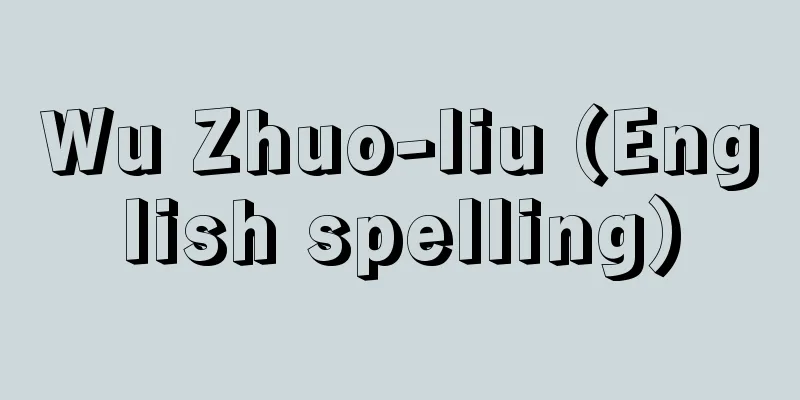Hara Taneaki

|
A representative Christian social worker of the Meiji period. The third son of Sakuma Kenso, a yoriki (police officer) of the Edo magistrate's office, he took his mother's surname, Hara. At the age of 14, he took over the Hara family business and became a yoriki (police officer), but after the Meiji Restoration in 1874 (Meiji 7), he converted to Christianity. In the same year, he opened an English book store, Jujiya. In 1875, he launched the Christian weekly magazine Tokyo Shimpo, and in 1876, he founded the private Hara Girls' School in Kyobashi. From 1882, he published nishikie (colored woodblock prints) for export, but he became interested in the Freedom and People's Rights Movement, and in the autumn of 1883, he was charged with violating the Newspaper Ordinance after publishing a colored woodblock print related to the Fukushima incident of the previous year, and was sentenced to three months' imprisonment, fined 30 yen, and imprisoned in Ishikawajima Prison. This experience inspired him to aspire to protect prisoners and released prisoners. From 1884 onwards, he served as a prison chaplain in Kobe and Hokkaido for 12 years. In 1897, he established the Hara Boarding House, a shelter for released prisoners, in Kanda Jinbocho, Tokyo. Since then, he has provided protection and relief to approximately 10,000 released prisoners. In 1908 (Meiji 41), he worked hard to establish the Central Charity Association. In 1913 (Taisho 2), he published his book, Protecting Released Prisoners. [Ogura Shoji March 19, 2018] "Basic Documents on Social Work in the Prewar Period 23: Protection of Released Prisoners" (1995, Japan Library Center)" ▽ "Masao Wakagi's "Father of Rehabilitation Protection: Hara Taneaki" (1951, Watanabe Shobo / Reproduction, 1996, Ozorasha)" [Reference items] | |Source: Shogakukan Encyclopedia Nipponica About Encyclopedia Nipponica Information | Legend |
|
明治時代の代表的なキリスト教社会事業家。江戸の町奉行(ぶぎょう)所与力(よりき)佐久間健叟(さくまけんそう)の三男。母方の原姓を継ぐ。14歳で原家の家職を継ぎ与力となるが、維新後の1874年(明治7)キリスト教に入信。同年英書販売店十字屋を開く。1875年キリスト教主義の週刊雑誌『東京新報』を発刊、1876年京橋に私立原女学校を創立。1882年から輸出向けの錦絵(にしきえ)を刊行していたが、自由民権運動に関心をもち、1883年秋、前年の福島事件に関連する錦絵を出版して新聞紙条例違反に問われ、軽禁錮3か月、罰金30円に処せられて石川島監獄に下獄した。この体験から受刑者・出獄者の保護を志す。1884年以後12年にわたり、神戸・北海道で監獄教誨(きょうかい)師を務めた。1897年には東京・神田神保町(かんだじんぼうちょう)に出獄人保護所「原寄宿舎」を創設。以後出獄者約1万人を保護、救済した。1908年(明治41)には中央慈善協会の設立に尽力した。1913年(大正2)には、著書『出獄人保護』を発表した。 [小倉襄二 2018年3月19日] 『『戦前期社会事業基本文献集23 出獄人保護』(1995・日本図書センター)』▽『若木雅夫著『更生保護の父原胤昭』(1951・渡辺書房/複製・1996・大空社)』 [参照項目] | |出典 小学館 日本大百科全書(ニッポニカ)日本大百科全書(ニッポニカ)について 情報 | 凡例 |
<<: Bhāratavarṣa (English spelling)
Recommend
Toscanini - Arturo Toscanini
Italian conductor. Born in Parma on March 25th. S...
Limit - limit
In a sequence of numbers a 1 , a 2 ,……, a n ,……, ...
Mr. Endo - pea
(1) One of the medieval samurai Settsu Watanabe cl...
Yuichi Takahashi
A representative Western-style painter in the ear...
Flower seal - Kaoin
… [Samurai and commoners' signatures] Next, a...
《Le suicide:étude de sociologie》(English notation)Lesuicide etude desociologie
…Scar [Fukui Yuko]. . . *Some of the terminology ...
Yoshida Koton
A pioneer of historical research in the late Edo ...
Bill fish
…General term for fishes belonging to the Istioph...
IPCC - IPCC
The abbreviation for the Intergovernmental Panel o...
Siveton
9-cycloheptadecen-1-one. C 17 H 30 O(250.43). Mus...
Alpine fleabane
...Both are used in rock gardens and as mountain ...
Diffuse reflection
When incident light is reflected in irregular dir...
Quantum number - ryoushisuu (English spelling) quantum number
In quantum mechanics, physical quantities often h...
Calico controversy - Calico
...the general term for the British Acts of 1700 ...
Voyager
Also called Voyager. An unmanned probe used in the...









